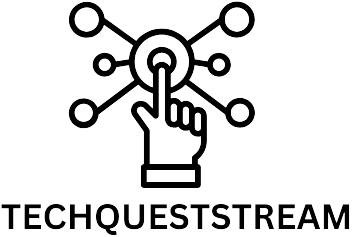In the ever-evolving world of artificial intelligence, choosing the right programming language can feel like picking the perfect avocado—one wrong move and you’re left with a mushy disaster. As AI continues to take the tech world by storm, developers are on the hunt for the best tools to bring their brilliant ideas to life.
Table of Contents
ToggleOverview of AI Programming Languages
Selecting an AI programming language involves evaluating several factors, including ease of use, community support, and performance. Python stands out as one of the top choices due to its simplicity and extensive libraries. Libraries like TensorFlow and PyTorch offer robust tools tailored for AI and machine learning tasks.
R programming appeals to statisticians and data scientists, making it ideal for data analysis. Its strong statistical packages help with data manipulation and visualization. Developers might find Java beneficial for scalability and performance in large applications. Java’s portability across platforms enhances its utility in enterprise-level AI systems.
JavaScript is gaining traction in AI, particularly for web-based applications. With libraries such as Brain.js, it simplifies the integration of AI features into websites. C++ provides developers with fine control over system resources, making it suitable for performance-critical applications like game AI.
Choosing a language often depends on the specific AI application. For instance, Python typically excels in prototype development, while C++ and Java shine in production environments. Various factors can also influence the choice, such as project requirements and team expertise.
Other languages, such as Kotlin and Ruby, offer unique advantages but have limited applications in mainstream AI. As emerging technologies develop, new languages may also strengthen the AI landscape. Considering the rapid pace of AI advancement, selecting the right programming language remains crucial for achieving optimal outcomes in AI projects.
Criteria for Selecting the Best Programming Language

Choosing the right programming language for AI projects involves several important criteria. Developers should consider aspects such as ease of learning, community support, and library availability to ensure success.
Ease of Learning
Ease of learning significantly influences a developer’s productivity. Languages that are intuitive allow for quicker adaptation and implementation of complex algorithms. Python exemplifies this with its simple syntax and readability, making it accessible for beginners. Alternatively, R also offers user-friendly features for data analysis and statistical models. Both languages enable users to focus on concepts rather than struggling with intricate code. This ease can foster innovation and experimentation, especially useful in the fast-paced AI landscape.
Community Support
Community support plays a crucial role in language selection. A strong community provides resources, troubleshooting, and collaboration opportunities. Python boasts one of the largest communities, contributing vast amounts of tutorials and forums. This access helps developers overcome obstacles efficiently. Java also benefits from a dedicated community, delivering extensive documentation and resources for building robust applications. In contrast, smaller communities may limit available support, making it vital to factor this aspect into the language choice.
Library and Framework Availability
Library and framework availability is essential for streamlining AI development. Languages with extensive libraries allow developers to leverage pre-built functionalities, saving time and effort. Python shines here with libraries like TensorFlow and PyTorch designed specifically for AI projects. These frameworks facilitate model training and deployment, accelerating the development process. Java also offers powerful libraries such as Deeplearning4j for deep learning applications. The presence of readily available tools makes selecting a language with strong library support vital for any AI initiative.
Top Programming Languages for AI
Selecting the right programming language is vital for any AI project. Several languages stand out due to their unique features and community support.
Python
Python ranks as the leading choice for AI development. Its straightforward syntax and readability simplify programming for developers of all skill levels. The availability of powerful libraries like TensorFlow, PyTorch, and scikit-learn enhances its appeal, making it ideal for machine learning and deep learning tasks. Python’s active community offers valuable resources and support, getting developers the assistance they need. Many educational institutions teach Python as a first language, boosting its popularity among novices. As a result, prototyping and experimentation become more accessible and efficient.
R
R provides exceptional tools for statistical analysis, making it popular among data scientists. Its extensive collection of packages, such as caret and randomForest, caters specifically to data mining and machine learning. Visualizing data with libraries like ggplot2 becomes intuitive, allowing analysts to communicate insights effectively. R’s community consists of many experienced statisticians. With its focus on data and statistical computing, R excels in academic and research-oriented AI projects rather than general application development.
Java
Java stands out for its scalability and performance, ideal for large-scale AI applications. The language’s ability to handle complex tasks makes it suitable for enterprise-level solutions. Java’s platform independence allows flexibility across various systems, enabling developers to create robust applications. Libraries such as Deeplearning4j and Weka support its usage in machine learning. With constant demand for Java developers in the enterprise sector, many teams opt for it when building reliable, maintainable AI systems.
C++
C++ offers fine control over system resources, which is crucial for high-performance applications. The language enables efficient memory management, making it suitable for real-time AI systems. Developers can leverage libraries like TensorFlow and OpenCV, which provide tools for deep learning and computer vision. Many performance-critical tasks in AI require C++, especially when optimized processing power is essential. As a result, developers often choose C++ when aiming for speed and efficiency in their AI projects.
Comparison of the Programming Languages
Selecting the right programming language for AI involves careful consideration of multiple factors. Below is an in-depth comparison based on essential criteria: performance, scalability, and use cases.
Performance
Performance varies significantly across programming languages. Python, while not the fastest, excels in ease of use, making it suitable for rapid development. C++ stands out for its execution speed and resource management, ideal for computation-intensive AI applications. Java also provides a good balance, offering robust performance through managed environments. R’s performance shines in statistical modeling, especially in data-heavy environments. These differences influence the decision-making process, as performance requirements often dictate the language choice.
Scalability
Scalability plays a crucial role in the choice of programming language. Java is designed for scalable applications and boasts strong support for multi-threading, essential for handling large data sets in AI systems. Python can manage scalability but may require additional tools to optimize performance for larger applications. C++ offers fine-grained control over resources, making scaling feasible for high-performance tasks. When developing AI models that need to grow over time, choosing the right language based on scalability considerations becomes essential.
Use Cases
Use cases drive the selection of programming languages in AI. Many developers turn to Python for machine learning and deep learning due to its extensive libraries and community support. R is favored in academia for data analysis and statistical modeling, making it a popular choice among researchers. Java is often used for large-scale enterprise applications, where reliability and robustness are key. Meanwhile, C++ is chosen for real-time systems requiring high efficiency. Recognizing how each language aligns with specific use cases helps in making informed decisions.
Choosing the right programming language for AI projects is crucial for success in a rapidly evolving landscape. Developers must weigh factors such as ease of use, community support, and performance to determine the best fit for their specific needs. While Python remains the frontrunner due to its simplicity and rich libraries, other languages like R, Java, C++, and even JavaScript offer unique advantages for different applications.
Ultimately, aligning the language with project requirements and goals will lead to more effective and efficient AI solutions. As technology advances, staying informed about the strengths and weaknesses of each language will empower developers to make informed decisions that drive innovation in artificial intelligence.






